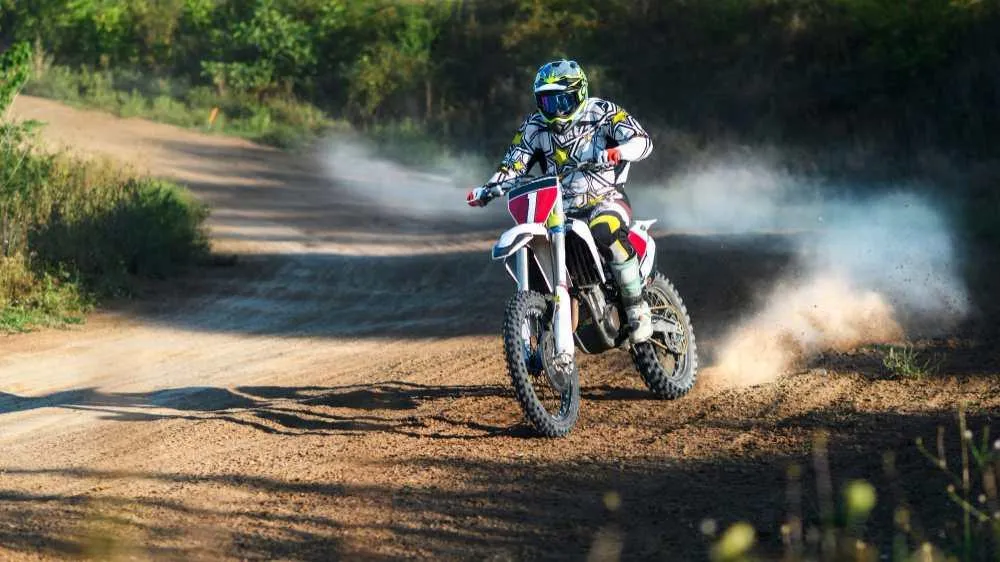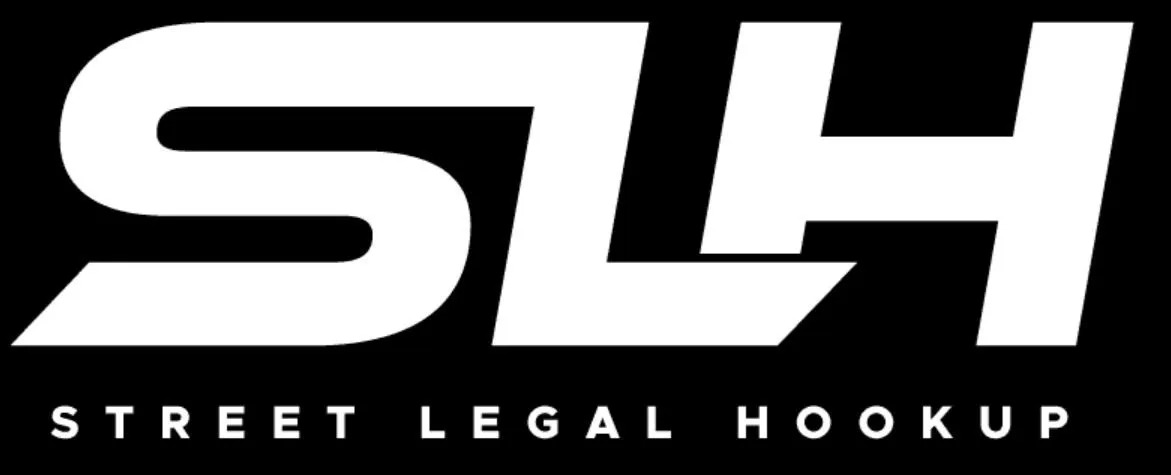
How to Make Your Dirt Bike Street Legal: A Step-by-Step Guide
Picture yourself riding a dirt bike from a muddy trail to a paved city street, blending off-road thrills with the freedom of the open road. For off-road enthusiasts, this dual-purpose dream is exciting, yet the process can feel complex due to varying state regulations, paperwork challenges, and modification requirements. Converting a dirt bike to street-legal status is entirely achievable with clear guidance, allowing you to ride legally while managing costs.
This guide offers a detailed roadmap to navigate the steps, from equipping your bike with the right parts to securing proper registration and licensing.
Key Takeaways
Understand street-legal requirements across states.
Modify your dirt bike for road safety and compliance.
Register your bike efficiently, even without a title.
Save thousands through smart registration strategies.
Meet insurance and licensing needs for legal riding.
What Does It Mean to Make a Dirt Bike Street Legal?
A street-legal dirt bike meets Department of Transportation (DOT) standards, allowing safe operation on public roads. Unlike dual-sport motorcycles, which arrive from the factory with road-ready features like headlights and turn signals, most dirt bikes, including motocross models like the Yamaha YZ250 or Honda CRF250R, need modifications and registration to comply. A street-legal dirt bike, often called a converted dirt bike or dual-sport conversion, requires components such as a headlight with high/low beams, brake light, mirrors, DOT tires, a horn, and a visible license plate.
State laws vary significantly. California imposes strict emissions and noise rules, often requiring spark arrestors or catalytic converters, while Montana’s relaxed regulations skip inspections, making it a popular registration state. Electric dirt bikes face unique rules, sometimes classified as bicycles if under 30 mph (as in New York) or as motorcycles for higher-powered models, requiring specific licenses. Speed matters for safety: a 250cc dirt bike like the YZ250 or CRF250R can reach 60–85 mph, a YZ125 hits around 60 mph, and a 2-stroke 450 exceeds 90 mph, necessitating robust modifications.
Dirt bike laws also depend on bike type and rider age. Off-road dirt bikes, lacking road features, are limited to private land, trails, or motocross tracks. In California, off-road bikes need a Red or Green Sticker, with Green allowing year-round riding and Red limiting it due to emissions. Dual-sport bikes, already street-legal, require only registration and insurance. Younger riders face restrictions: some states allow 13-year-olds to ride 50cc bikes on private land with supervision, while 16-year-olds can operate up to 125cc with a permit, as in New York. These regulations ensure safe, legal riding.
Step-by-Step Process to Convert Your Dirt Bike

Transforming a dirt bike into a street-legal vehicle involves four key steps: verifying eligibility, installing modifications, registering the bike, and securing insurance and licensing. This section provides a comprehensive guide to meet dirt bike street legal requirements and address challenges like missing titles or state-specific regulations.
Step 1: Check Your Dirt Bike’s Eligibility
Start by confirming your dirt bike’s eligibility for street use. Locate the Vehicle Identification Number (VIN) on the frame, typically near the steering head or engine, and verify it matches your bill of sale or title. This step ensures ownership and protects against purchasing a stolen bike. Check the VIN using the National Insurance Crime Bureau’s VINCheck database to confirm a clean history. Buying a dirt bike with no title is often fine, as specialized services can secure one through recovery processes. Selling a bike without a title is possible, but buyers may hesitate, so obtaining one boosts value.
If your bike lacks a title or VIN, Street Legal Hookup’s dirt bike registration without title service navigates these issues, working with state DMVs to issue new titles or VINs using bills of sale or other records. For example, older bikes or secondhand purchases often lack paperwork, but we streamline the process. Ensure no liens exist, as they block registration. Submit your VIN, bill of sale, or documents through a secure online platform for verification, keeping your conversion on track.
Step 2: Install Necessary Modifications
To meet DOT standards, your dirt bike needs upgrades costing $500–$2,000, depending on the bike and parts. These modifications ensure safety and compliance on public roads. For street riding, wear safety gear: a DOT-approved helmet, gloves, padded jacket, pants, and boots to protect against pavement hazards. Here’s what your bike needs:
Headlight: Install a DOT-compliant LED headlight ($50–$150) with high/low beams for day and night visibility. Position the switch on the left handlebar, as required by most states.
Brake Light: Add a tail light with a brake function ($30–$100), triggered by a banjo-bolt or mechanical switch on the front brake lever and rear pedal, alerting drivers when you slow.
Turn Signals: Though hand signals are allowed in some states, DOT-approved LED turn signals ($20–$80) improve safety, especially at night, maintaining handlebar control.
Electric Horn: A loud horn ($8–$30) meets state laws, drawing under 10 amps for minimal electrical strain.
Mirrors: Install two shatterproof mirrors ($15–$50) for full rear visibility, though some states require only one. Bar-end mirrors suit bikes without threaded mounts.
Tires: Swap to highway-rated DOT tires ($100–$400), marked “DOT” on the sidewall, to handle speeds like 85 mph for a 250cc bike or 90 mph for a 450cc. Supermoto conversions with 17-inch rims enhance handling.
License Plate Mount: Secure a license plate bracket ($10–$40) with an LED light for readability. Check state rules, as some require placement behind the rear wheel.
Electrical Upgrades: Upgrade the stator and rectifier ($100–$300) to power components. A small battery ($50–$100) ensures lights work when idling.
Optional Components: An odometer ($50–$150) tracks speed, mileage, and RPM, helping manage fuel (dirt bikes hold ~2 gallons). A kickstand ($20–$50) aids urban parking. A chain guard ($15–$40) prevents debris issues, and reflectors ($5–$20) on the front, rear, and sides boost nighttime visibility.
Brands like Baja Designs and Trail Tech offer reliable kits for DIY installation. If you’re not mechanically inclined, a professional mechanic ensures proper setup. These upgrades make your bike safe and compliant, whether it’s a 125cc YZ125 or a high-speed 2-stroke 450.
Step 3: Register Your Dirt Bike with a Montana LLC
Registration is a critical step, and Montana’s lenient vehicle laws make it ideal. Street Legal Hookup’s Montana dirt bike registration uses a Montana LLC to bypass sales tax, emissions tests, and inspections, saving $5,000–$15,000 compared to states like California. If your bike lacks a title, we work with Montana’s DMV to get a title for you, ensuring legal registration and future saleability. The process is simple:
Submit your bike’s VIN, bill of sale, or title via a secure online platform.
Complete LLC formation forms digitally through a customer dashboard.
Mail your title or bill of sale in a prepaid envelope provided.
Receive permanent plates in 3–6 weeks, or opt for 40-day temporary tags in 1 day.
The $995 flat fee covers all costs, with no residency requirements. Montana’s laws allow permanent plates for bikes over 11 years old, eliminating annual renewals. This method is legal nationwide, though high-tax states may impose use taxes if the bike is stored in-state. Consult a tax professional for compliance. See how our online platform simplifies registration (links to customer dashboard).
Step 4: Secure Insurance and Licensing
Riding legally requires street legal dirt bike insurance and, typically, a motorcycle endorsement. Liability coverage, costing $100–$400 per year, is affordable and mandatory, protecting against accident-related damages or injuries. List the Montana LLC as an additional interest on the policy. Compare providers for the best rates, and update your policy if you modify your bike (e.g., adding a high-output stator). Dirt bike insurance is generally cheaper than car insurance, making it a manageable expense.
Most states require a motorcycle endorsement (e.g., Class M in California) for any street-legal dirt bike, regardless of engine size, involving a skills test or safety course. Some states allow younger riders to operate low-cc bikes without a full endorsement.
For instance, 13-year-olds can ride 50cc bikes on private land with supervision, while 16-year-olds can handle up to 125cc with a permit, as in New York. There’s no upper CC limit for street-legal bikes with a proper license, so a 250cc or 450cc bike is fine with an endorsement. Electric dirt bikes may require only a standard driver’s license if under 30 mph. Check your local DMV for license and age rules, and keep registration and insurance documents handy for traffic stops.
Costs and Savings of Street-Legal Conversion
Converting a dirt bike involves upfront and ongoing costs, but Montana registration saves thousands. Here’s the breakdown:
Modifications: A street legal dirt bike kit costs $500–$2,000, covering headlights, brake light, turn signals, mirrors, DOT tires, and electrical upgrades. For example, a high-quality LED headlight runs $50–$150.
Registration: Street Legal Hookup’s Montana LLC registration is $995, including LLC setup and permanent plates.
Insurance: Liability coverage costs $100–$400 per year.
Total Upfront Cost: $1,500–$3,400, plus annual insurance.
A CRF250R, priced around $8,000–$9,000, could incur $560–$810 in California sales tax (7–9%), plus emissions tests ($50–$200) and inspections ($50–$100). Total costs in high-tax states can exceed $10,000.
Montana registration saves $5,000–$15,000 by avoiding these fees. Permanent plates for bikes over 11 years old eliminate renewals, and a dirt bike engine’s lifespan, typically 5–10 years with maintenance, ensures long-term value.
Owning a dirt bike isn’t inherently expensive, especially with tax savings. Sarah from Arizona converted her KTM for $2,200 and saved $7,500, with plates in five days.
Overcoming Common Conversion Challenges
Converting a dirt bike can present hurdles, but solutions exist. Missing titles, common with older or secondhand bikes, can be resolved through Street Legal Hookup’s service to get a title if there isn’t one, securing paperwork for registration or future sales.
To avoid buying a stolen bike, verify the VIN with the National Insurance Crime Bureau before purchase. If the VIN is missing, we can register a bike with no VIN by obtaining a new one from the state, though additional documentation may be needed.
High-tax states like California may scrutinize out-of-state LLCs, potentially imposing use taxes if the bike is stored in-state. Montana LLCs are legal, but consult a tax professional for compliance. Neighborhood riding may be restricted by local ordinances, especially in residential areas where noise or off-road use is limited. Check municipal laws to avoid fines.
Installation challenges, like stator rewiring, can be tackled with brands like Baja Designs or a mechanic’s help. Street Legal Hookup’s online support guides you through these issues, ensuring a smooth conversion.
Why Pick Our Street Legal Hookup Service? Your Success, Our Guarantee
Turning your dirt bike into a street-legal machine should be simple, fast, and affordable. Street Legal Hookup makes it easy with a 100% online registration process through a Montana LLC, helping you skip state taxes, inspections, and delays while getting permanent plates in record time.
Nationwide Legal Coverage: Register your dirt bike for street use in all 50 states with no residency requirements or in-person DMV visits.
Flat-Fee, All-Inclusive Service: Pay a one-time $995 fee with no hidden costs, renewals, or surprise charges.
Permanent Plates Shipped Fast: Receive lifetime plates within 3–6 weeks, or temporary tags in just 1 day.
Save Thousands in Taxes: Avoid $5,000–$15,000 in state sales tax and inspection fees using a Montana LLC registration.
No Emissions or Inspection Hassles: Skip smog checks and state modification inspections entirely.
Expert Help with Missing Titles: Our team specializes in securing titles or VINs for older and secondhand dirt bikes.
Secure Online Platform: Upload your documents, track progress, and complete your registration entirely online.
Trusted by Riders Nationwide: Thousands of dirt bike owners rely on us every year for fast, legal, and affordable registration.
Street Legal Hookup gives you more than a license plate. It gives you freedom to ride your dirt bike anywhere, from forest trails to city streets, knowing you’re fully compliant and protected.
FAQs on Street-Legal Dirt Bikes
How much would it cost to make a dirt bike street-legal?
Expect $1,500–$3,400, including mods ($500–$2,000), registration ($995 with Street Legal Hookup), and insurance ($100–$400/year). Montana registration saves $5,000–$15,000 compared to high-tax states.
How to convert a dirt bike to road legal?
Add DOT-compliant mods (headlights, brake light, mirrors, DOT tires) and register via a Montana LLC to skip taxes and inspections.
Do I need a license for a dirt bike?
Yes, most states require a motorcycle endorsement (e.g., Class M). Check your DMV for specifics.
What is a street dirt bike called?
It’s either a converted dirt bike or a dual-sport motorcycle if factory-equipped for roads.
Do dirt bikes need insurance?
Yes, liability coverage is mandatory for street use, costing $100–$400 annually.
Conclusion
Converting your dirt bike to street-legal status lets you ride from trails to streets with confidence. By verifying eligibility, installing DOT-compliant modifications like turn signals and a license plate, registering through Montana’s lenient laws, and securing affordable insurance, you meet all legal standards.
This process saves $5,000–$15,000, avoids inspections, and handles title issues, with permanent plates for bikes over 11 years old. Street Legal Hookup’s expertise ensures a seamless experience, even for complex cases.



